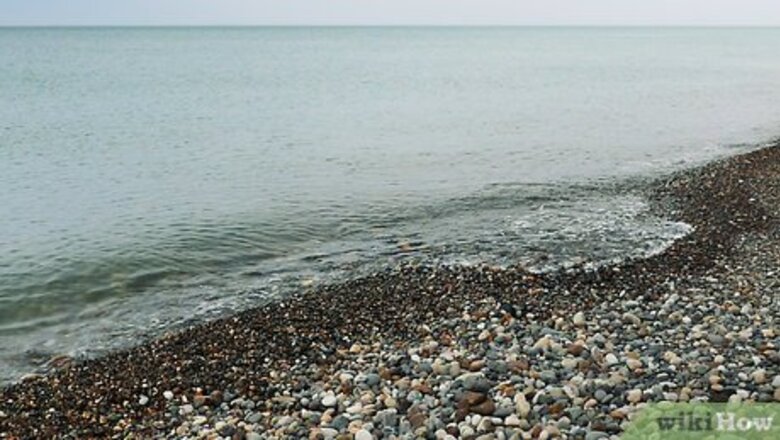
views
Finding the Right Location and Rock
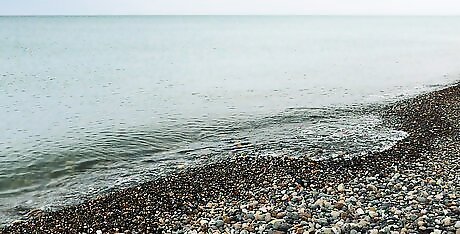
Go to a large body of water when the weather is calm. Visit a pond or lake at a time when there are no waves. In order for your rock to skip, the water needs to be flat and calm. Try to find an area with rocky shore so you have a better chance of finding a stone you can skip. Oceans aren't the best locations to skip rocks unless it's a very calm day.
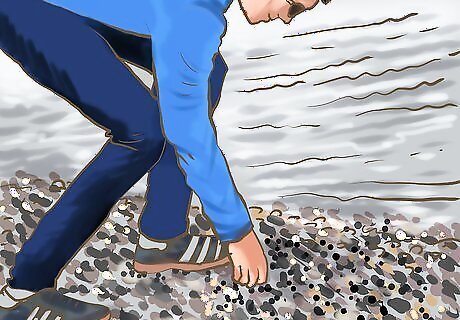
Look for a flat, smooth stone near the water. Try to find rocks that easily fit in your palm and weigh less than a tennis ball. The thinner the rocks are, the easier they will bounce across the surface of the water. Keep looking for rocks until you collect 10 or more so you don't have to look for new ones after each throw. Bring rocks that you find around your home if you're worried about looking for rocks near the water. Experiment with different thicknesses and weights to see what kind of rock works best for you.Tip: Opt for a triangular stone if you can find one. Flat triangular rocks are more stable than perfectly round rocks.

Hold the stone between your thumb and middle finger. Clench the middle finger, ring finger, and pinkie on your dominant hand so you're making a partial fist. Set the rock on top of your middle finger and hold it firmly in place with thumb.

Hook your index finger around the edge of the rock. Firmly wrap your index finger around the rock. Your index finger adds spin to the rock once you throw it to help it skip across the water's surface. Make sure your thumb is on top of the rock rather that wrapped around it.
Throwing the Stone

Face the water at a slight angle with your arm low to the ground. Stand with your non-dominant arm facing the water so your body is at a 15-degree angle. Keep your feet shoulder-width apart and your knees slightly bent. Extend your dominant arm at your side and hold the rock parallel to the ground.
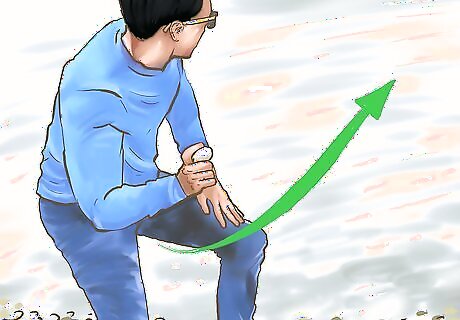
Bring your arm and wrist behind you. Move your arm so it's behind your body, still keeping the rock parallel to the ground. Make sure your chest and shoulders are still facing the water. Bend your wrist backward so it's at a 90-degree angle to your arm. Take your time with the backswing and follow through the first time you try skipping rocks. Over time, you'll be able to skip rocks in one fluid motion.
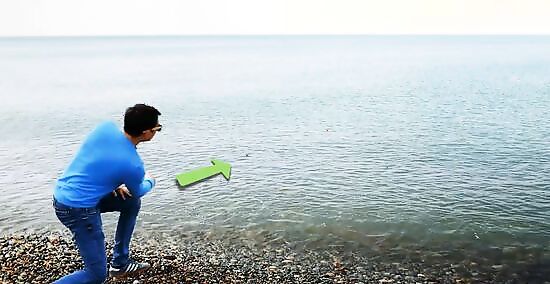
Throw your arm out in front of you and release the rock when it's in front of your body. Bend your knees as you move your dominant arm in front of your body. Flick your wrist at the end of your throw and let go of the rock so it spins off your index finger and lands parallel to the water. The spinning will help the rock bounce off the water's surface so it skips multiple times. Rocks skip across the water because they form a cavity when they first impact the surface. The flat bottom of the rock rides along the angle of the cavity, sending it airborne again so it can skip. Don't try and throw hard. Instead, try to throw your arm quickly. If your rock doesn't skip the first time you try, take your time to readjust your form and try again. Practice makes perfect!Tip: Try shifting your weight onto your back foot on your backswing, and then back to your front foot when you throw the rock. This can add more power to your throw, similar to a baseball pitch.



















Comments
0 comment